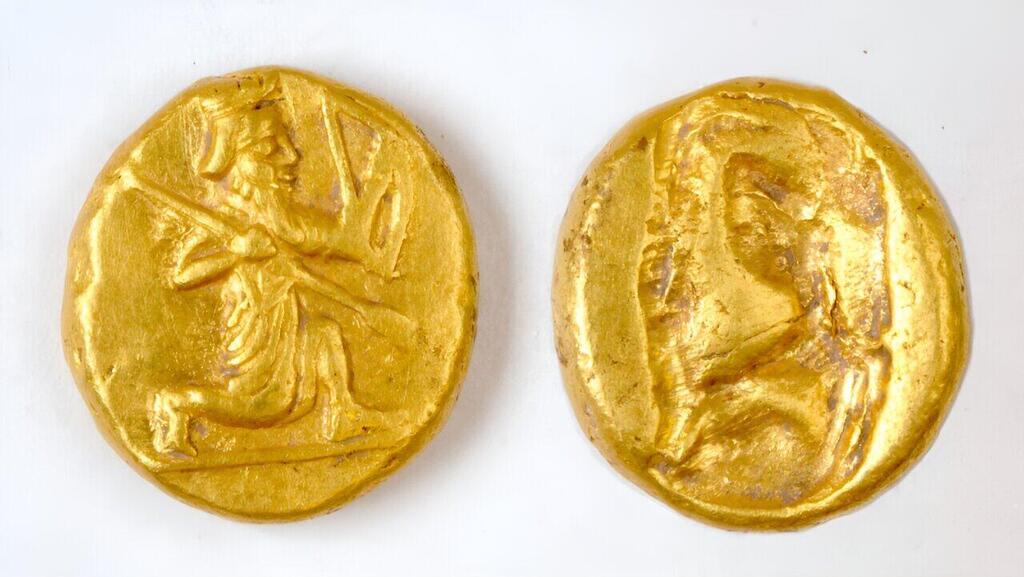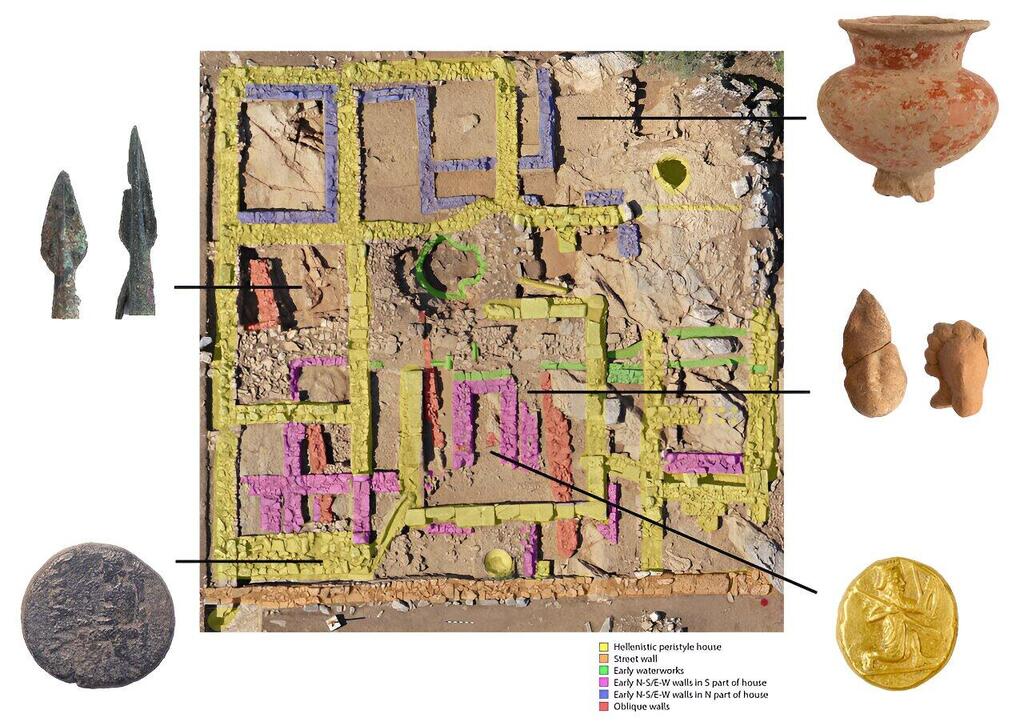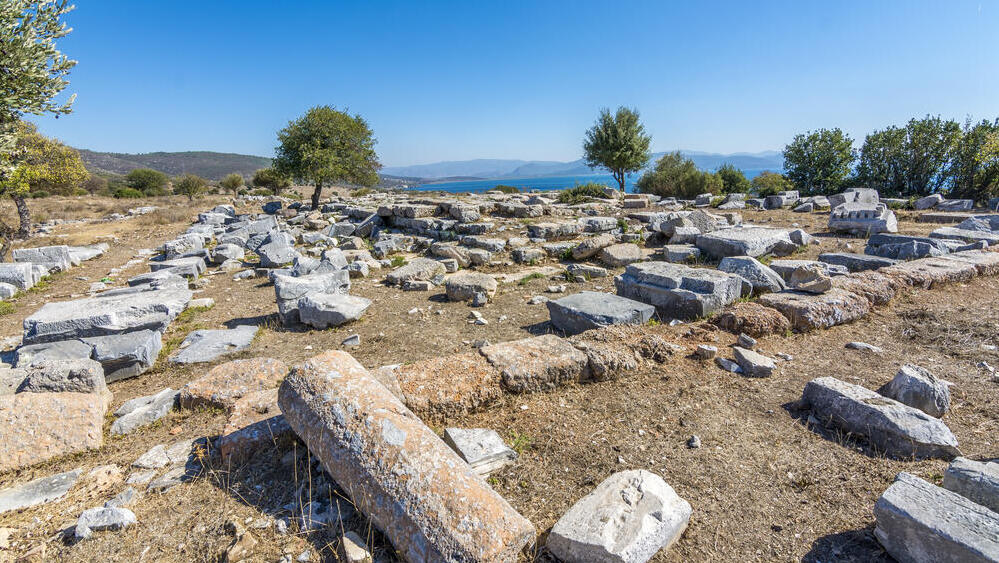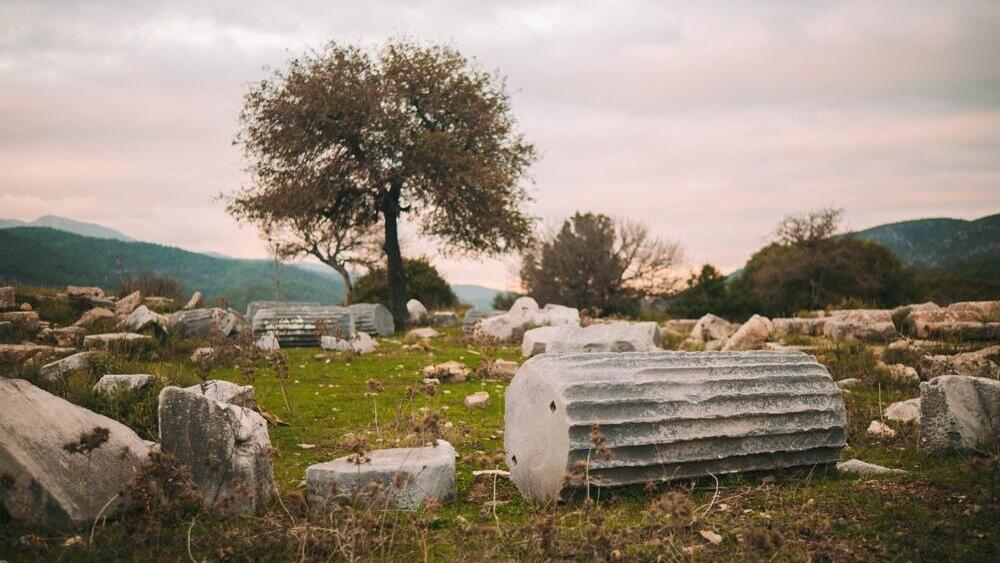Gold coins were discovered during excavations in the ancient city of Notion, located in present-day western Turkey, which were likely used to pay local mercenaries. The coins feature the image of a kneeling archer, similar to the Persian gold coin Daric (Dareik in Persian), which was issued by the Persian Empire and minted in Sardis, nearly 100 km (62 miles) northeast of Notion.
The coins, dated to the 5th century BCE, not only shed light on the timeline of Persian numismatology but also represent a rare find intended to be unearthed later, according to Dr. Christopher Ratte, an archaeologist from the University of Michigan specializing in ancient Mediterranean art and archaeology, who is overseeing the excavations at Notion.
4 View gallery


Persian Daric found in Notion
(Photo: Notion Archaeological Project, University of Michigan)
The Daric coins were minted from the late 6th century BCE until the Persian Empire's conquest by Alexander the Great in 330 BCE, with the design remaining consistent apart from minor stylistic differences that helped create a chronological sequence.
The best-preserved remains of the city where the coins were found date back to the Hellenistic period, between the 3rd and 1st centuries BCE. However, excavations in the city center suggest it was inhabited at an ever earlier time, around the 5th century BCE.
" According to the Greek historian Xenophon, a single daric was equivalent to a soldier’s pay for one month," Ratte explained. The dating of the coins to the 5th century BCE is particularly significant, as it provides a solid anchor point for studying the chronology of Persian coinage.
Previous attempts to do so relied on stylistic differences, but the current excavation findings offer a rare opportunity to date studies with additional ancient artifacts, such as pottery discovered during the digs.
Given the assumption that mercenaries were paid in Daric coins, it’s possible that battles fought in the Notion area are linked to the coins that were found. Notion was part of the Persian Empire, along with other Greek cities on the western coast of Turkey, in the mid-6th century BCE. It was liberated from Persian rule in the early 5th century BCE but was later reabsorbed into its territories in the early 4th century BCE, until Alexander’s conquest.
The city of Notion was under Athenian rule during most of the 5th century BCE, while freed from Persian control. The conflicting loyalties of the city's inhabitants and other close communities, which straddled the border between Persian and Athenian spheres of influence, are illustrated by a dramatic episode described by the Greek historian Thucydides.
Between 430 BCE and 427 BCE, a group of Persian Empire supporters from the nearby city of Colophon seized part of Notion with the help of Greek and "barbarian" mercenaries. In 427 BCE, an Athenian assault led to the killing of several pro-Persian mercenaries after they were lured into an ambush. The Persian supporters were expelled, and the city of Notion was reorganized under Athenian supervision.
The event may shed light on the discovered gold coins and their purpose, though it might not be the only reason for their presence. Later, in 406 BCE, during the final stages of the Peloponnesian War, a decisive naval battle between Athens and Sparta took place off the coast of Notion, where the Athenians had established a naval base, although the Spartans ultimately emerged victorious.
Asia Minor, a peninsula in the western part of Asia also known as Anatolia, entered renewed conflict between 366 BCE and 360 BCE during what is known as the 'Revolt of the Satraps' — a series of rebellions within the Achaemenid Persian Empire where the satraps (provincial governors) attempted to establish themselves as independent rulers, free from the Persian king's authority.
Notion's port was considered a valuable asset, so the event might also be connected to the gold coins found in the city. Researchers hope that continued excavations at the historical site will further illuminate the trove’s archaeological context, while the study of the coins, currently under the care of the Ephesus Archaeological Museum in Turkey, is expected to provide additional information about this important archaeological find.




